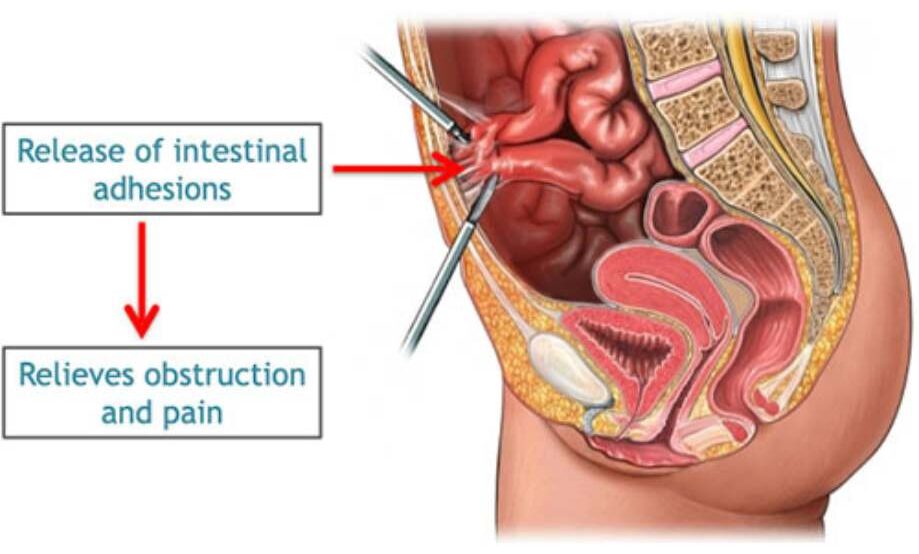What is Laparoscopic Adhesiolysis?
Laparoscopic adhesiolysis is a minimally invasive surgical procedure used to remove pelvic adhesions. Adhesions are bands of scar tissue that form between pelvic organs and tissues, often as a result of previous surgeries, infections, endometriosis, or inflammation. These adhesions can cause organs to stick together, leading to pain, infertility, and bowel or bladder problems. Laparoscopic adhesiolysis uses small keyhole incisions and a camera (laparoscope) to locate and carefully cut these adhesions, restoring normal organ movement and function.

Symptoms of Pelvic Adhesions
Pelvic adhesions may cause a range of symptoms, including:
- Chronic pelvic pain
- Pain during menstruation (dysmenorrhea)
- Pain during sexual intercourse (dyspareunia)
- Difficulty in conceiving (infertility)
- Bowel obstruction symptoms like bloating, constipation, or cramping
- Urinary problems in severe cases
Procedure / Treatment
During laparoscopic adhesiolysis:
- The patient is placed under general anesthesia.
- Small incisions are made in the abdomen.
- A laparoscope (thin tube with camera) is inserted to visualise the pelvic organs.
- Surgical instruments are used through additional tiny incisions to carefully cut and remove the adhesions without damaging surrounding tissues.
- The procedure generally lasts between 1-3 hours depending on the severity and extent of adhesions.
- Patients usually go home the same day or after an overnight stay, with faster recovery compared to open surgery.
Prevention
While not all adhesions can be prevented, certain measures reduce the risk:
- Minimising unnecessary pelvic surgeries
- Using minimally invasive techniques like laparoscopy instead of open surgery
- Using adhesion barriers during surgeries
- Managing pelvic infections promptly
- Treating endometriosis effectively to reduce inflammation and scarring
Benefits of Timely Treatment
- Relief from chronic pelvic pain
- Improved fertility outcomes
- Restoration of normal organ movement
- Minimally invasive with smaller scars
- Shorter hospital stay and faster recovery
- Reduced postoperative pain compared to open adhesiolysis
Types
Laparoscopic adhesiolysis can be performed for:
Post-surgical adhesions – after C-sections, hysterectomies, or other pelvic surgeries.
Endometriosis-related adhesions – removal of adhesions formed due to endometriosis.
Infection-related adhesions – from pelvic inflammatory disease or previous infections.
Bowel adhesions – if bowel loops are involved, adhesiolysis may relieve obstruction symptoms.
